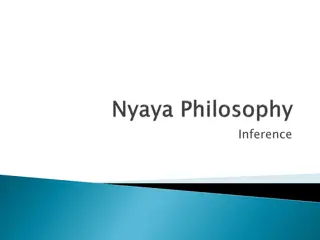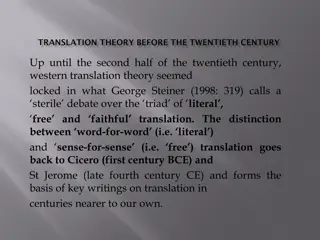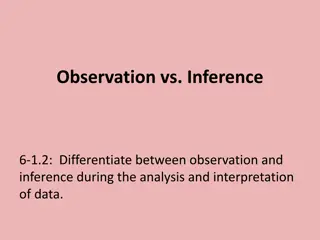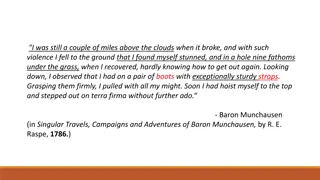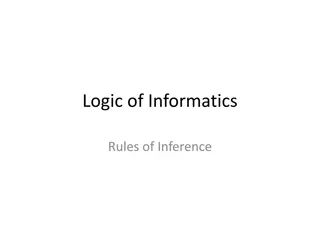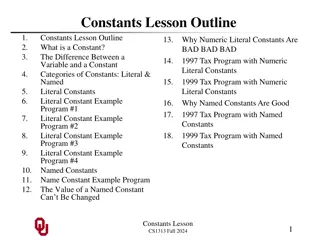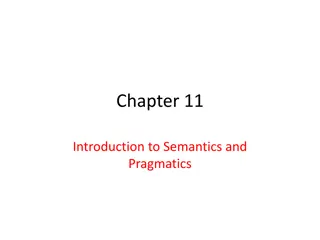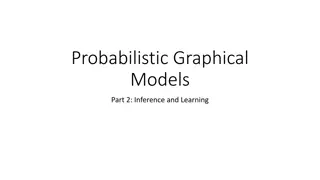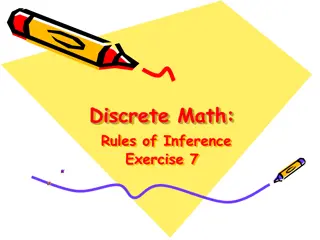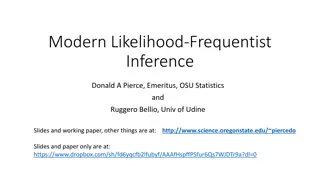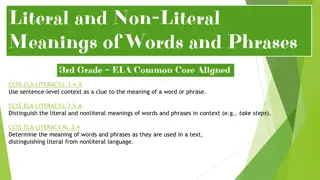
Understanding Narrative Voice in Storytelling
Explore the concepts of narrative voice and storytelling perspectives in this educational content featuring examples and exercises. Learn about first person, second person, and third person narration styles. Practice identifying the narrative voice in provided excerpts. Enhance your understanding of how stories are told through different perspectives.
Download Presentation

Please find below an Image/Link to download the presentation.
The content on the website is provided AS IS for your information and personal use only. It may not be sold, licensed, or shared on other websites without obtaining consent from the author. If you encounter any issues during the download, it is possible that the publisher has removed the file from their server.
You are allowed to download the files provided on this website for personal or commercial use, subject to the condition that they are used lawfully. All files are the property of their respective owners.
The content on the website is provided AS IS for your information and personal use only. It may not be sold, licensed, or shared on other websites without obtaining consent from the author.
E N D
Presentation Transcript
Unit 1: Novel: The Terrible Thing that Happened to Barnaby Brocket: Lesson Five
Date: 2024 Title: What is narrative voice? From whose perspective can a narrative be told? What is the difference between finding literal information and making inferences? Do it now Recap questions: Vocabulary 1. If something is described as unsightly, what is it? 2. What is literal information? 3. What is an inference? 4. What have we inferred about the Brocket family so far? Why do you think the way that you do? Last lesson Miss Odell is currently reading
How are narratives told? A novel is an extended piece of prose that tells a story. Another word for story is NARRATIVE. The way in which a narrative is told can vary. Here are the first three ways we can be told a narrative. Do it now We can be told a narrative through the FIRST PERSON. A FIRST PERSON NARRATOR is a story told in the first person (I/we) so is told from the perspective of one of the characters. It is very rare to have a narrative written using the SECOND PERSON. A SECOND PERSONNARRATOR is a story in which the reader is brought into the narrative as a character involved in the story. Finally, a narrative can be told through the THIRD PERSON. A THIRD PERSON NARRATOR is a story told in the third person (he/she/they) so the person narrating often exists outside the story.
Task: now look at the following extracts. Can you identify whether these extracts are written in the first person, the second person or the third person? Pangu was worried the two halves would collapse onto each other and seal up again, so he came between them and pushed them apart his arms sending yang upwards and his feet sending yin downwards. With his efforts, the two halves moved away from each other over time: with each day, the sky rose 10 feet and the Earth lowered 10 feet. The person this extract is written in is: I was glad of it: I never liked long walks, especially on chilly afternoons: dreadful to me was the coming home in the raw twilight, with nipped fingers and toes, and a heart saddened by the chidings of Bessie, the nurse, and humbled by the consciousness of my physical inferiority to Eliza, John, and Georgiana Reed. The person this extract is written in is: Do it now At the subway station you wait fifteen minutes on the platform for a train. Finally a local, enervated by graffiti, shuffles into the station. You get a seat and hoist a copy of the New York Post. The Post is the most shameful of your several addictions. Alistair and Eleanor looked down at Barnaby s face and he smiled up at them, kicking his arms and legs in delight, but neither parent smiled back. Henry and Melanie looked at each other in surprise. They weren t used to their parents speaking in such a brusque fashion. They fished out the present they d bought the previous day by pooling their pocket money. The person this extract is written in is: The person this extract is written in is:
The Terrible Thing That Happened to Barnaby Brocket New knowledge Chapter 3
In Chapter 3, life continues to be difficult for the Brockets. Eleanor __________ to be seen in daylight with Barnaby as she is worried about what other __________ may think. Alistair, however, insists that she take Barnaby out for a walk so she uses the __________ to ensure Barnaby Pen to Paper does not float away. Whilst they are out walking, they come across Mr __________ who is outraged by the sight of Barnaby and the Moffats who start to take __________ of him. Angrily, Eleanor insists Barnaby stop floating and when he tells her he can t she responds by saying that she does not __________ him very much as a result. dog-lead like Chappaqua refuses people pictures
Over the past couple of lessons we have been learning about the difference between seeing (finding literal information) and thinking (inferring). Let s revise what we have learnt in today s lesson using the events from Chapter 3. New knowledge
Mr Chappaqua And then, looking up, he noticed Barnaby floating above her and his cheerful expression immediately changed. Your boy is floating, Mrs Brocket, he said, horrified, unable to bear the familiarity of her first name now. He s floating! Pen to paper And Mr Chappaqua, appalled, simply growled like a roused wolf. What literal information can we find in the text that tells us how Mr Chappaqua and Mr and Mrs Moffat reacted when they saw Barnaby Brocket? Piece of evidence 1: Piece of evidence 2: Piece of evidence 3:
Mr and Mrs Moffat But as they made their way along the street towards home, they were met by another neighbor, or rather a pair of neighbours, named Joe and Alice Moffat, who were something big in computers (or so Eleanor had heard). They were chatting away quite happily as they walked along, hand in hand, but when they saw Eleanor, Barnaby and Captain W.E. Johns coming their way they immediately stopped and stared, their mouths falling open in surprise. What literal information can we find in the text that tells us how Mr and Mrs Moffat reacted when they saw Barnaby Brocket? Piece of evidence 1: Pen to paper Piece of evidence 2:
Recapping prior learning Now let s think about what we might be able to infer. You are going to be given some of the descriptions of how the characters reacted. For each description, what can you infer from the reactions of Mr Chappaqua and Mr and Mrs Moffat to Barnaby Brocket? REMEMBER, an inference cannot use the same language that can be seen you need to use your own words.
What can we infer from the reactions of Mr Chappaqua and Mr and Mrs Moffat to Barnaby Brocket? The characters reaction His cheerful expression immediately changed Horrified, unable to bear the familiarity of her first name now. Mr Chappaqua, appalled, simply growled like a roused wolf. They immediately stopped and stared, their mouths falling open in surprise. What can we infer as a result? Pen to paper
Reflection Key question: Do you think it is a good thing to pass judgement on someone? Why? Why not? to pass judgement an idiom (a stock phrase or expression that is part of a cultures every day usage) To pass judgement means to form a critical opinion of For example: I know you don t like musicals but don t pass judgement until you see this one for yourself. Key question: Have Mr Chappaqua and Mr and Mrs Moffat passed judgement on Barnaby Brocket? Origin: The original meaning of pass judgment refers to a courtroom judge making a legal decision, or literally judging. The source of this term is judgment, originally "action of trying at law," from the Latin iudicare, "to examine officially.

